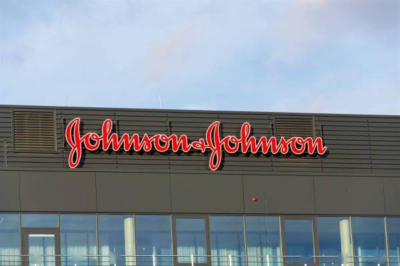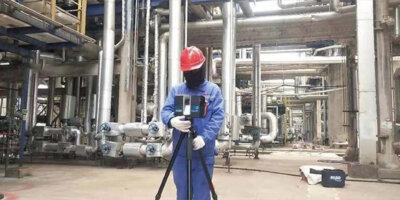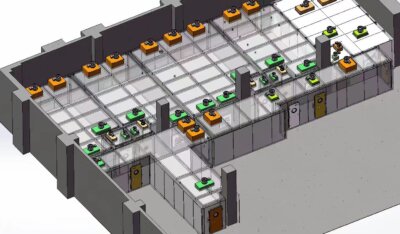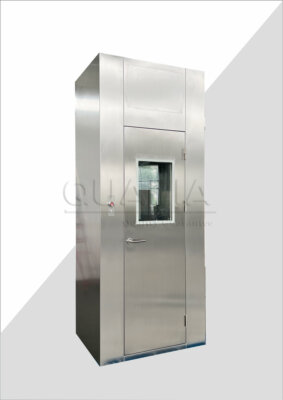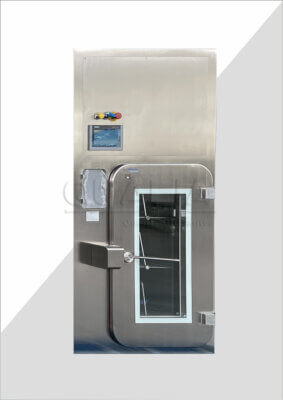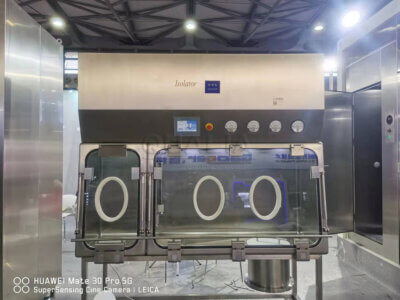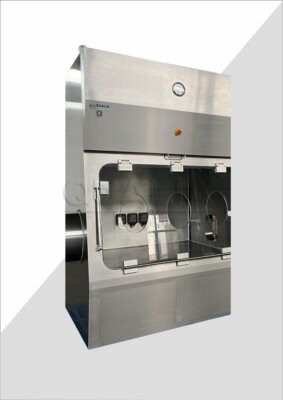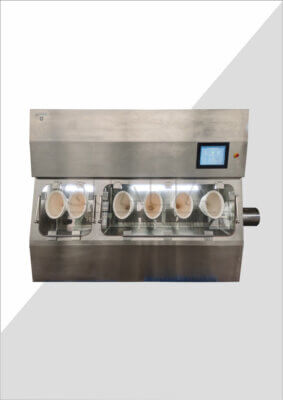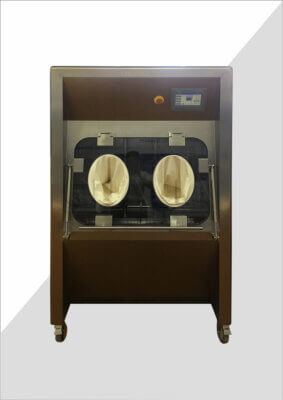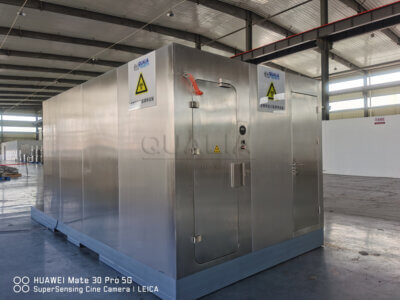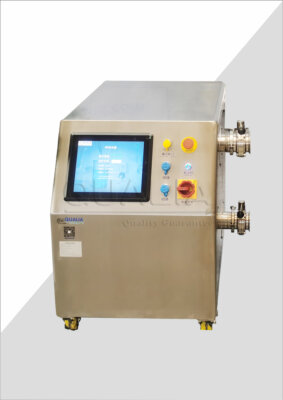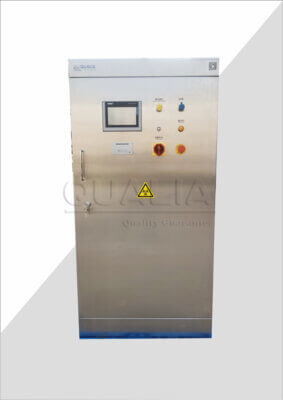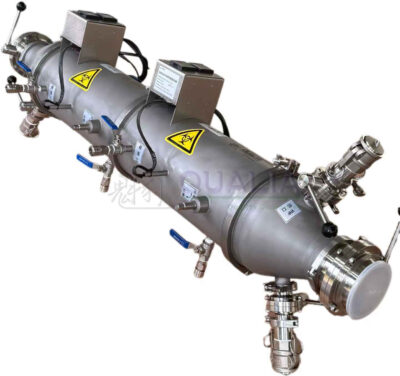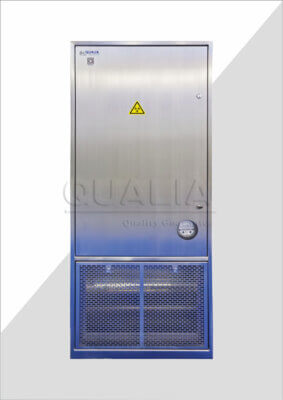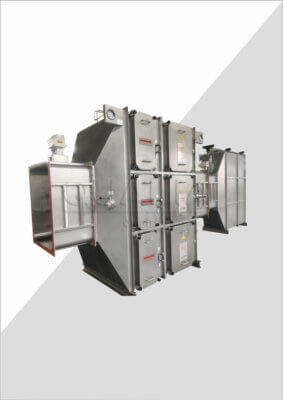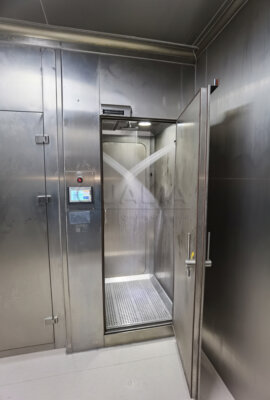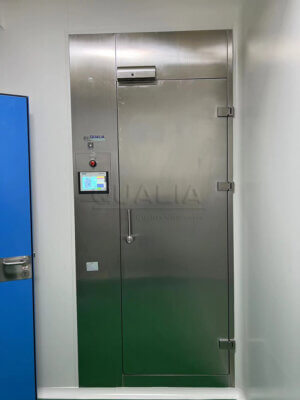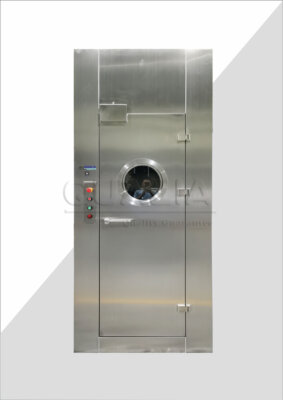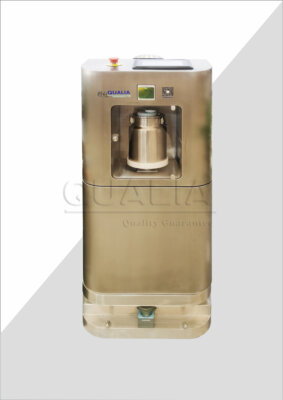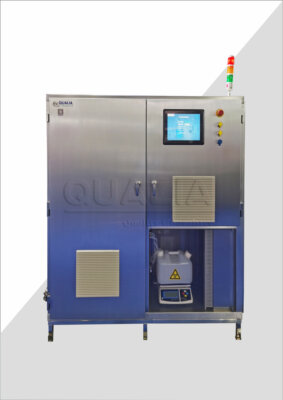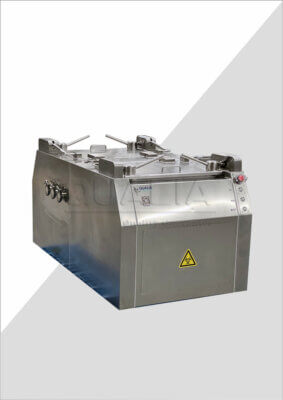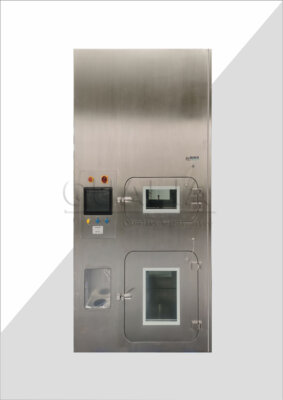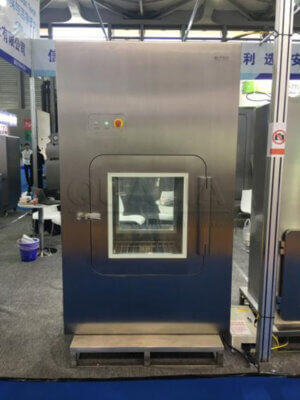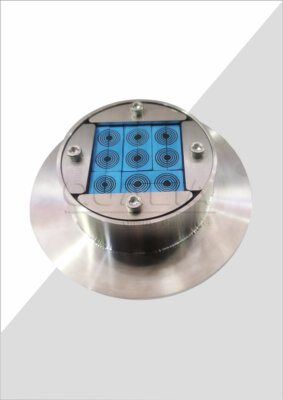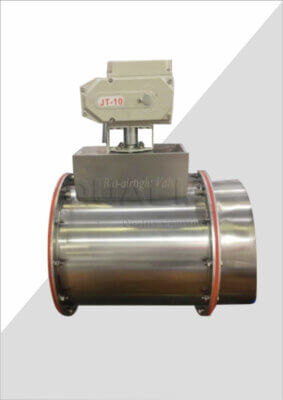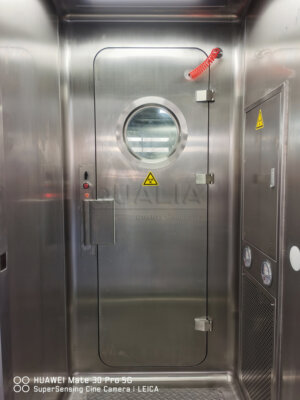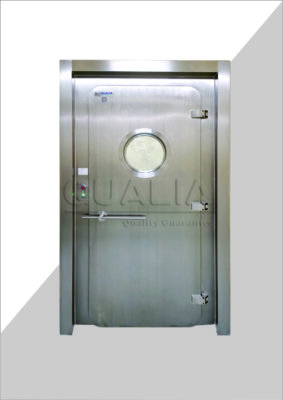In the ever-evolving landscape of pharmaceutical manufacturing, the implementation of advanced containment technologies has become crucial for ensuring product quality and safety. Among these technologies, Closed Restricted Access Barrier Systems (RABS) have emerged as a significant player, offering a balance between isolator-level protection and the flexibility of traditional cleanrooms. As facilities consider upgrading their aseptic processing capabilities, a thorough cost-benefit analysis of implementing closed RABS becomes essential.
The decision to implement closed RABS in a pharmaceutical facility involves careful consideration of various factors, including initial investment, operational costs, regulatory compliance, and long-term benefits. While the upfront costs can be substantial, the potential improvements in product quality, reduced contamination risks, and increased operational efficiency can provide significant returns over time. This article will delve into the key aspects of closed RABS implementation, exploring the financial implications, operational advantages, and potential challenges that facilities may encounter.
As we transition into a detailed examination of closed RABS implementation, it's important to recognize that this decision is not one-size-fits-all. Each facility must evaluate its unique needs, existing infrastructure, and long-term goals to determine if closed RABS is the right fit. By exploring the various facets of this technology, from initial setup to ongoing maintenance and regulatory considerations, we can provide a comprehensive framework for decision-makers to assess the viability of closed RABS in their facilities.
Implementing closed RABS can significantly reduce contamination risks and improve product quality, potentially offsetting the initial investment through increased operational efficiency and reduced batch rejections.
To provide a clear overview of the costs and benefits associated with closed RABS implementation, let's examine the following comparison table:
| Aspect | Closed RABS | Traditional Cleanroom |
|---|---|---|
| Initial Investment | Higher | Lower |
| Contamination Risk | Lower | Higher |
| Operational Flexibility | Moderate | High |
| Energy Costs | Lower | Higher |
| Personnel Requirements | Fewer | More |
| Regulatory Compliance | Easier | More Challenging |
| Product Quality Assurance | Higher | Moderate |
| Batch Rejection Rate | Lower | Higher |
What are the initial costs associated with closed RABS implementation?
The journey towards implementing closed RABS begins with a significant financial commitment. The initial costs encompass not only the purchase of the RABS units themselves but also the necessary modifications to existing facilities to accommodate this new technology.
When considering the implementation of closed RABS, facilities must account for the costs of the equipment, installation, and any required structural changes to their cleanrooms. This may include reinforcing floors to support the weight of the units, modifying HVAC systems, and reconfiguring existing production lines.
The initial investment in closed RABS can be substantial, often ranging from hundreds of thousands to millions of dollars, depending on the scale of implementation and the complexity of the facility's needs. However, it's crucial to view this expense in the context of long-term benefits and potential cost savings in other areas of operation.
The initial cost of implementing closed RABS can be up to 30% higher than traditional cleanroom setups, but this investment can lead to significant operational cost savings over time.
| Cost Component | Percentage of Total Initial Investment |
|---|---|
| RABS Units | 50-60% |
| Facility Modifications | 20-30% |
| Installation and Validation | 15-20% |
| Training | 5-10% |
How does closed RABS impact operational efficiency?
Implementing closed RABS can significantly enhance operational efficiency in pharmaceutical manufacturing facilities. The streamlined design and advanced containment capabilities of ISOSERIES Closed Restricted Access Barrier System (cRABS) contribute to a more controlled and efficient production environment.
Closed RABS systems allow for faster changeovers between product runs, reducing downtime and increasing overall production capacity. The segregation of critical areas also minimizes the risk of cross-contamination, potentially leading to fewer batch rejections and less product waste.
Furthermore, the improved containment provided by closed RABS can lead to reduced energy consumption compared to traditional cleanrooms. The smaller controlled space requires less air handling and HVAC load, resulting in lower utility costs over time.
Facilities implementing closed RABS have reported operational efficiency improvements of up to 25%, with some seeing reductions in batch changeover times of up to 40%.
| Efficiency Metric | Improvement with Closed RABS |
|---|---|
| Batch Changeover Time | 30-40% reduction |
| Energy Consumption | 15-20% reduction |
| Product Waste | 10-15% reduction |
| Overall Equipment Effectiveness (OEE) | 10-20% increase |
What are the regulatory compliance benefits of closed RABS?
In the highly regulated pharmaceutical industry, compliance with regulatory standards is paramount. Closed RABS offer several advantages when it comes to meeting and exceeding regulatory requirements, potentially streamlining the approval process for new products and facility upgrades.
The controlled environment provided by closed RABS aligns well with current Good Manufacturing Practice (cGMP) guidelines. The physical barrier and controlled access points inherent in RABS design help ensure consistent adherence to aseptic processing standards, reducing the risk of human error and contamination.
Regulatory bodies such as the FDA and EMA have shown favorable views towards advanced containment technologies like closed RABS. Implementing these systems can demonstrate a commitment to quality and may facilitate smoother inspections and approvals.
Facilities using closed RABS have reported up to 30% reduction in time spent on regulatory compliance activities and a 40% decrease in observations during regulatory inspections.
| Regulatory Aspect | Impact of Closed RABS |
|---|---|
| Inspection Observations | 30-40% reduction |
| Time Spent on Compliance Activities | 20-30% reduction |
| Documentation Requirements | 15-25% reduction |
| Audit Trail Integrity | Significantly improved |
How does closed RABS affect personnel requirements and training?
The implementation of closed RABS can have a significant impact on personnel requirements and training needs within a pharmaceutical manufacturing facility. While the initial training investment may be substantial, the long-term effects on staffing and expertise can lead to operational efficiencies.
Closed RABS typically require fewer personnel to operate compared to traditional cleanrooms. The controlled environment and automated processes reduce the need for constant human intervention, potentially allowing for a leaner, more specialized workforce.
However, the specialized nature of closed RABS operations necessitates comprehensive training programs. Operators must be skilled in working with the RABS interfaces, understanding the principles of aseptic processing, and troubleshooting potential issues.
Facilities implementing closed RABS have reported a 20-30% reduction in the number of personnel required for aseptic processing operations, while increasing the skill level and specialization of their workforce.
| Personnel Aspect | Change with Closed RABS Implementation |
|---|---|
| Total Staff Required | 20-30% reduction |
| Training Duration | 30-50% increase |
| Skill Level Required | Significantly higher |
| Cross-training Opportunities | Increased |
What are the long-term cost savings associated with closed RABS?
While the initial investment in closed RABS can be substantial, the long-term cost savings potential is a critical factor in the cost-benefit analysis. These savings can accumulate from various aspects of operations, including reduced energy consumption, lower personnel costs, and decreased product waste.
Over time, the energy efficiency of closed RABS compared to traditional cleanrooms can lead to significant utility cost reductions. The smaller controlled space and more efficient air handling systems contribute to lower HVAC expenses.
The reduced risk of contamination and improved product quality assurance can result in fewer batch rejections, translating to less product waste and rework. This not only saves on material costs but also improves overall production efficiency.
Studies have shown that facilities implementing closed RABS can achieve long-term operational cost savings of 15-25% compared to traditional cleanroom setups, with some facilities reporting payback periods as short as 3-5 years.
| Cost Saving Area | Potential Annual Savings |
|---|---|
| Energy Costs | 15-20% |
| Personnel Costs | 10-15% |
| Product Waste Reduction | 10-20% |
| Maintenance Costs | 5-10% |
How does closed RABS impact product quality and contamination control?
One of the primary advantages of implementing closed RABS is the significant improvement in product quality and contamination control. The physical barrier and controlled access points inherent in RABS design create a highly controlled environment that minimizes the risk of product contamination.
(QUALIA) closed RABS systems provide a robust barrier between the product and the surrounding environment, reducing the potential for microbial and particulate contamination. This level of protection is particularly crucial for sensitive pharmaceutical products and can lead to improved product stability and shelf life.
The enhanced contamination control offered by closed RABS can also result in fewer investigations and out-of-specification results, streamlining the quality assurance process and potentially accelerating time-to-market for new products.
Facilities using closed RABS have reported reductions in microbial contamination events by up to 70% and decreases in particulate contamination levels by up to 90% compared to traditional cleanroom operations.
| Quality Metric | Improvement with Closed RABS |
|---|---|
| Microbial Contamination Events | 60-70% reduction |
| Particulate Levels | 80-90% reduction |
| Product Sterility Assurance | Significantly improved |
| Batch Release Time | 20-30% reduction |
What are the potential challenges in implementing closed RABS?
While the benefits of closed RABS are substantial, it's important to consider the potential challenges that facilities may face during implementation and operation. Addressing these challenges proactively can help ensure a smoother transition and maximize the return on investment.
One of the primary challenges is the initial disruption to existing operations during installation and validation. Facilities must carefully plan for downtime and potential production delays during the implementation phase.
Another consideration is the potential limitation on flexibility compared to traditional cleanrooms. While closed RABS offer significant advantages in contamination control, they may require more planning and preparation for product changeovers or equipment modifications.
Surveys of facilities that have implemented closed RABS indicate that the average implementation process takes 6-12 months, with the most significant challenges reported in the areas of staff training (30%), integration with existing systems (25%), and initial validation (20%).
| Implementation Challenge | Percentage of Facilities Reporting |
|---|---|
| Staff Training | 30% |
| System Integration | 25% |
| Initial Validation | 20% |
| Production Downtime | 15% |
| Cost Overruns | 10% |
How does closed RABS compare to isolators in terms of cost-benefit?
When considering advanced containment technologies, many facilities weigh the options between closed RABS and isolators. Both systems offer significant improvements over traditional cleanrooms, but they differ in terms of initial costs, operational flexibility, and maintenance requirements.
Closed RABS typically have a lower initial cost compared to isolators and can be more easily integrated into existing cleanroom facilities. They also offer greater flexibility for interventions and maintenance, which can be advantageous for certain production processes.
Isolators, on the other hand, provide an even higher level of containment but come with higher initial costs and may require more extensive facility modifications. They can offer advantages in terms of sterility assurance and may be preferred for highly potent or sensitive products.
Cost-benefit analyses have shown that while isolators can provide up to 99.9999% sterility assurance, closed RABS can achieve 99.999% assurance at approximately 70-80% of the cost of an equivalent isolator system.
| Aspect | Closed RABS | Isolators |
|---|---|---|
| Initial Cost | Lower | Higher |
| Operational Flexibility | Higher | Lower |
| Sterility Assurance | Very High | Highest |
| Maintenance Complexity | Moderate | High |
| Integration with Existing Facilities | Easier | More Challenging |
In conclusion, the implementation of closed RABS in pharmaceutical manufacturing facilities represents a significant investment in advanced containment technology. While the initial costs can be substantial, the long-term benefits in terms of improved product quality, reduced contamination risks, and increased operational efficiency can provide a compelling return on investment.
The cost-benefit analysis of closed RABS implementation must consider various factors, including initial investment, operational costs, regulatory compliance benefits, and long-term savings. Facilities that carefully evaluate these aspects and align the implementation with their specific needs and goals are likely to see significant advantages over traditional cleanroom setups.
As the pharmaceutical industry continues to evolve, with increasing focus on product quality and regulatory compliance, technologies like closed RABS are becoming increasingly important. By providing a balance between the high containment of isolators and the flexibility of traditional cleanrooms, closed RABS offer a viable solution for many facilities looking to upgrade their aseptic processing capabilities.
Ultimately, the decision to implement closed RABS should be based on a thorough assessment of the facility's unique requirements, production processes, and long-term strategic objectives. With careful planning and execution, closed RABS can provide a powerful tool for enhancing product quality, improving operational efficiency, and maintaining a competitive edge in the pharmaceutical manufacturing landscape.
External Resources
Pharmaceutical Technology: Implementing RABS and Isolators – This article discusses the implementation process for RABS and isolators, including cost considerations and operational impacts.
PDA Journal of Pharmaceutical Science and Technology: RABS and Isolators – This resource provides a scientific perspective on the use of RABS and isolators in pharmaceutical manufacturing.
BioPharm International: Choosing Between RABS and Isolators – An in-depth comparison of RABS and isolators, including cost-benefit analysis and selection criteria.
American Pharmaceutical Review: Cost Analysis of Barrier Systems – This article provides a detailed cost analysis of various barrier systems, including RABS.
ISPE: Baseline Guide for Sterile Product Manufacturing Facilities – While not directly linked, this ISPE guide offers comprehensive information on sterile manufacturing, including sections on RABS implementation.
FDA: Guidance for Industry on Sterile Drug Products Produced by Aseptic Processing – This FDA guidance document provides regulatory perspective on aseptic processing, which is relevant to RABS implementation.
Related Contents:
- Unveiling the Best RABS for Your Facility
- Regulatory Compliance and Closed RABS in Pharmaceutical Production
- Maintaining Sterility: The Role of Closed RABS in cGMP Compliance
- Closed RABS: Revolutionizing Aseptic Processing in Pharmaceuticals
- Closed RABS in Biotech: Advancing Aseptic Processing
- Revolutionizing Contamination Control: The Closed RABS Impact
- Implementing Closed RABS: Ensuring Aseptic Processing Excellence
- Revolutionizing Manufacturing: Closed RABS Integration
- Revolutionizing Pharmaceutical Manufacturing with Closed RABS

